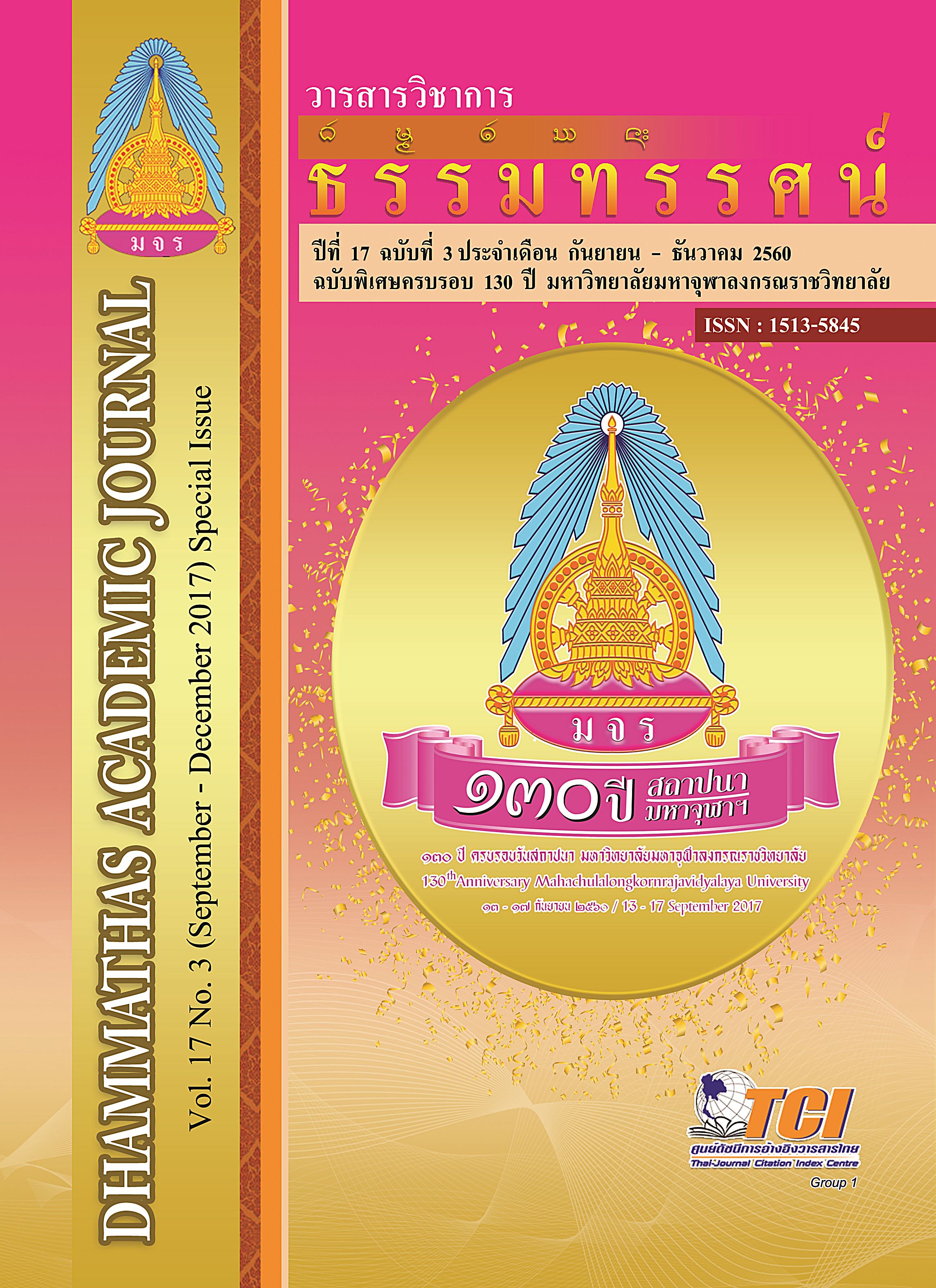Meditatiion-Practice Method for the Developing the Morality of Wat Nalaung Aphinyatesitadhamma the Sitadham Khamduang Sub-District, Banphua District Udornthani Province
Main Article Content
Abstract
The purposes of this dissertation were to study the Kammathanapractice for The purposes of this dissertation were to study the Kammathanapractice for developing the morality in Thai society, to study the guideline of Kammatthana practice for developing the morality of the place of Dhamma practice in Wat Nalaung Aphinyatesitadhamma and to analyze the results of Kammatthana practice towards the moral development of people who came to practice Dhamma in Wat Nalaung Abhinyadesikadham, Kamdoung village, Ban Phue District, Udonthani Province. This research was the qualitative research by interviewing the purposive groups and bringing the information for analysis.
The results of study were found that: SamathaKammatthana means the tricks or the method to make the mind tranquility. In another way, It is called as the guideline makes the one-pointedness of mind. While Vipassana means the intuitive vision or the Intuitive knowledge. The practice of the Insight Meditation in the forms of Inhale-Exhale to be spread out in Thailand by the pressure of Somdet PhraBuddhacariya (Arch Assapathera) who selected Phra Dhammathirajamahamuni (Phramaha Chodok Nansitthi) as the teacher to teach the Insight Meditation since the year of B.E. 2496 by including the study of scripture, the practice and the realization for developing the morality by having the two objectives, that is, (1) to develop persons (2) to develop the society in order to know the ultimate reality that is the principle in carrying their lives in the right and suitable way.
The guideline of Kammatthana practice for developing the morality of the place of Dhamma practice was in Wat Nalaung (AbhinyaThesitadhamma) that had Phra Rajasitthacariya (Laung Po Thongbai Papassaro), the Chief of Buddhists , who had the method of Vipassana practice by using the inhale-exhale forms in accordance with the method of Somdet PhraBuddhacariya (Arch Assapathera) and practiced in the standing, walking, sitting practice in compliance with the Four Foundations of Mindfulness.
An analysis of the resultant practice of practitioners began from the basic moralities that were the Five Precepts and Five Ennobling Virtues for their ways of lives in society with the happiness and moved to the middle morality by avoiding the Ten Roots of Unwholesome and practiced the Ten Roots of Wholesome were the moralities that emphasized to socialize the mind and the high morality in accordance with the Four Noble Truths and the Noble Eightfold Paths suitable for the Holy Ones who stayed away from the defilements. The received results were to abstain from doing harm to the others, but to assist others, sympathize others, not to hurt others, not to harm others, to do with good wishes, to have loving-kindness and to help others, not to harm the others’ properties or rights, but to distribute and not to commit sexual misconduct, to use the right and useful speech, to preserve the precepts physically and verbally, to increase the wisdom with hearing, and then to bring it into careful consideration, to have understanding and continuous practice and to make the mind constantly, not to quake to the provokers and thoughts and to have the principles for their lives.

